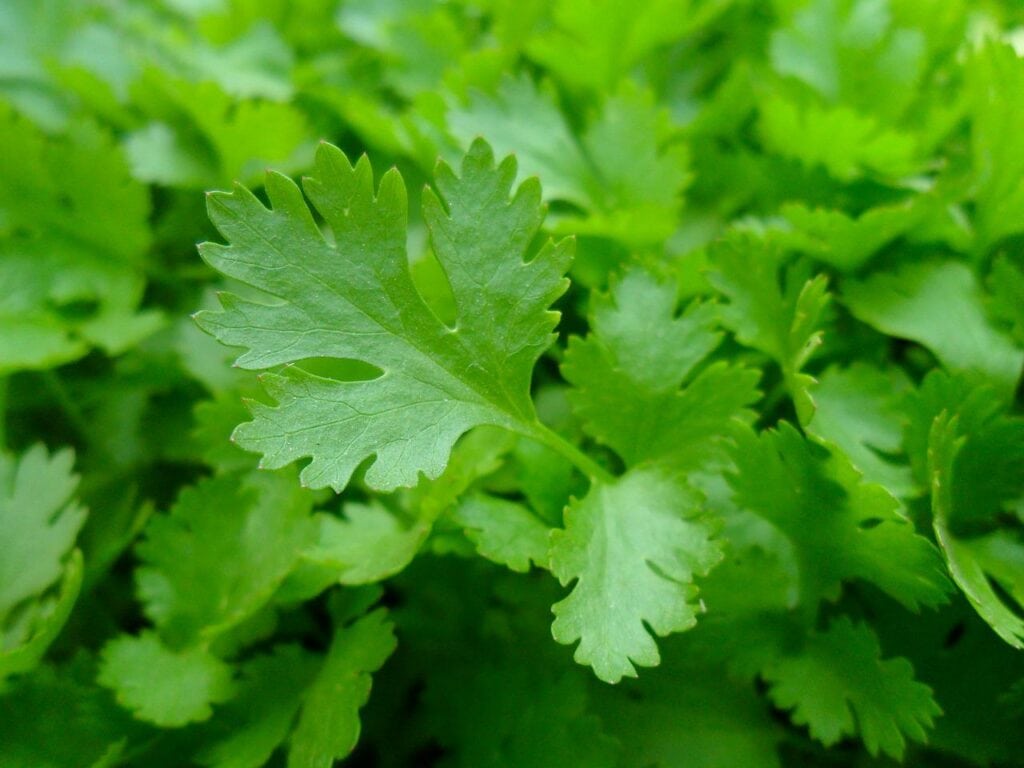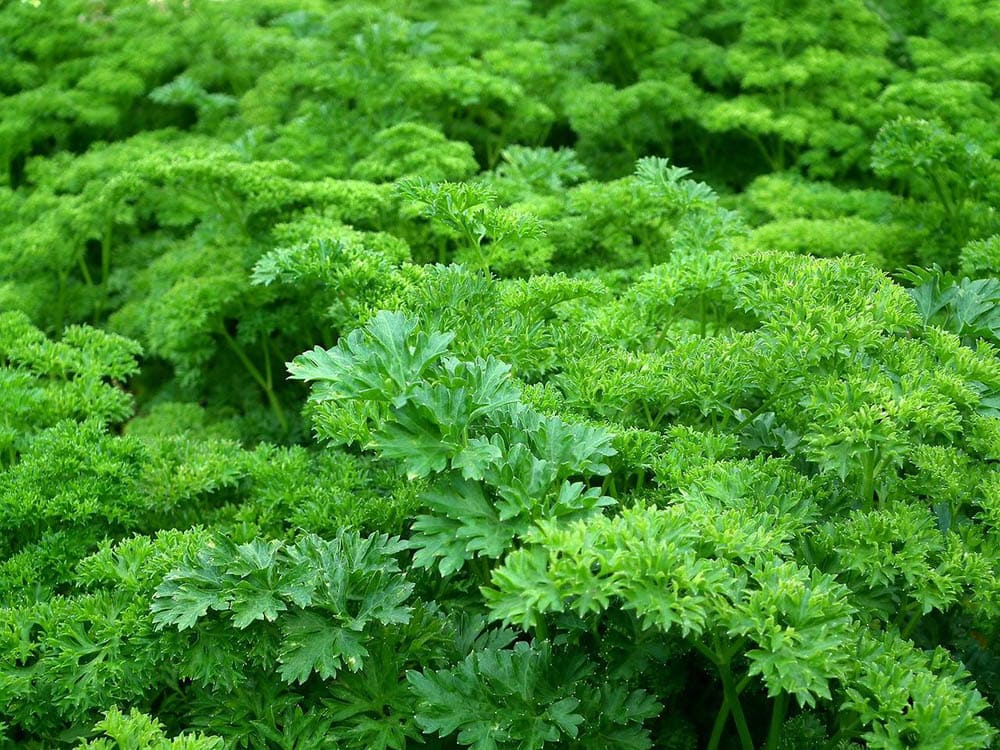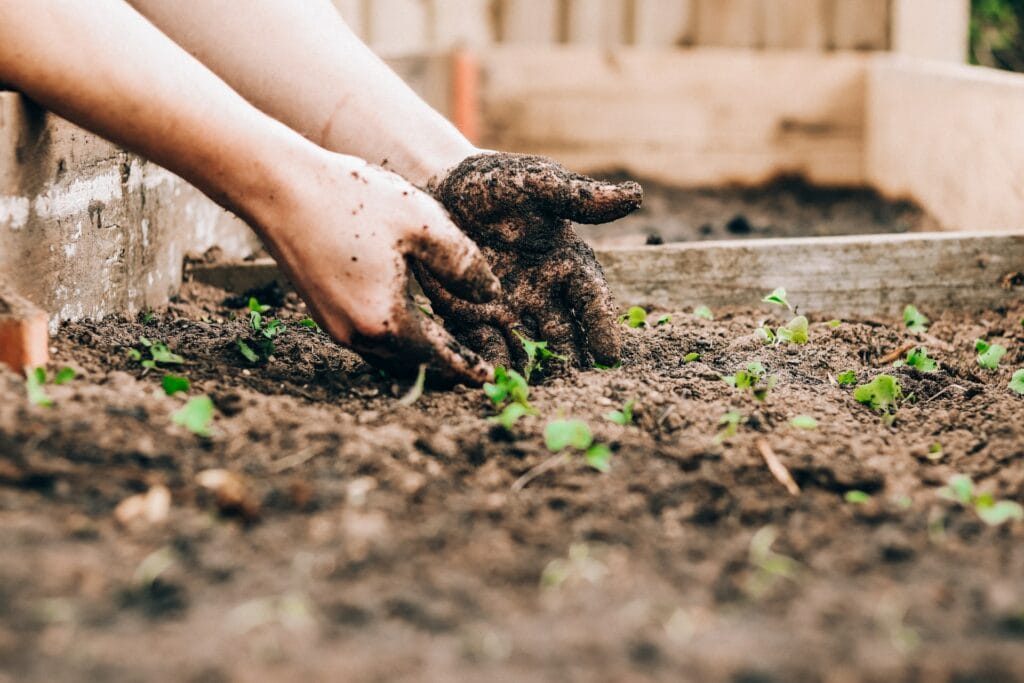How Much & How Often to Water Parsley: Properties & Characteristics
-
Pete Ortiz
- Last updated:

If you’re a fan of condiments and healthy eating, parsley will find a place in your kitchen. Classified as a super herb, this flowering plant comes with quite a few health benefits and can add a lovely flavor to pretty much any soup, salad, or dish. It’s not particularly hard to grow. You will, of course, need to plant it in the right soil, fertilize it, and ensure proper exposure to sunlight.
More importantly, parsley will flourish or wither depending on how well you water it. If you add too much, the roots will rot. In contrast, a lack of moisture will make the plant wilt. So, how much water does it need? Do you feed it once a month or more often? Read on to find out!
| Botanical Name | Petroselinum crispum |
| Soil Type | Well-drained, moist, loamy, rich in organic matter |
| Soil PH | 6.0–7.0 (slightly acidic) |
| Sun Exposure | Full sun/partial shade |
| Watering Requirements | Moderate, once in 2–3 weeks |
| Temperature | 40–90° Fahrenheit |
| Humidity Levels | 70–100% |
| Hardiness Zone | 3–9 USDA |
| Blooming Time | Early spring to winter (freezing) |
The Parsley Plant: Key Properties and Characteristics

Parsley doesn’t grow 10 feet tall (the average height is 25–30 inches) or survive in severe frost. Nor does it have a long lifespan or “killer” looks. It does, however, serve as an excellent source of nutrients. Often used for flavoring, it is widely cultivated not only in the US but the entire globe (parsley is native to the Mediterranean region).
It is edible, raw or dried, and goes well with seafood, marinades, and dressings. Speaking of flavoring, many beauty brands implement this flowering herb as a fragrance. We’re talking about perfumes and even soap products. The best word to describe this super herb is “versatile”. If you put some effort into it and grow it in your garden, you’ll always have a use for it!
How Much Water Does Parsley Need?
The worst thing for the delicate parsley plant is when it dries out completely and stays that way for long. This herb can grow in poor soil and partial shade but it won’t survive without water. So, make a habit of watering it (deeply) once in 2–3 weeks to keep the roots moisturized. And if it’s the growing season, consider adding water once a week or even more often. On average, 1–2 inches of water a week is best for it.
How do you know whether the plant needs extra water, or not? Use the good old “putting your fingers into the soil” technique. Does it feel dry? Then it’s time to grab that watering can and fix this! As with the vast majority of plants out there, overwatering is also an issue, and that’s why it is so important to check the soil before doing anything. It will take you two seconds to do it.
Finding the Golden Middle

Most gardeners are used to growing parsley in garden beds outside and watering it accordingly. However, if you’re growing it inside (like in a container), you need to water it less often to avoid root rot and keep fungi and diseases away. First, the seeds will get less sunlight inside. Second, you’ll probably have an air conditioner working in your house 24/7 during the hot summer days.
And the colder it is, the less water most flowering herbs and plants need. You might also have a humidifier fired up in the same room as the parsley seeds. Or, if you live somewhere in the south where it’s always humid, a dehumidifier will take some of that precious moisture in the air away. So, always check the soil to see how wet/dry it is, and go from there!
Sunlight, Temperature, Humidity
Parsley is one of those plants that flourish in full sunlight (6–8 hours) but can also grow and prosper in partial shade. As for the temperature, this herb is hardy in zones 3 through 9. It can easily handle quite a wide temperature range: 40–90°F. The ideal daily soil temperature is 70°F; at night, it can go a bit lower, down to 55–65°F. A quick note: the lower the temperature, the longer the plant will take to grow.
If you grow parsley in the North, it will endure through the fall and even early winter days, but once the temps drop to zero, it will die. In contrast, the plant can survive through all three winter months if you live in the Midwest or the West Coast. As for the humidity levels, parsley is a big fan of moisture (70–100%). So, don’t grow it in a dark and dry room or place it near a dehumidifier. The kitchen might be a good spot for it.
The Soil and Fertilizer

Alright, now let’s talk about the soil. Parsley thrives in moist, yet well-drained soil with a pH range of 6.0–7.0. And if it’s loamy and rich in organics, the plant will grow faster and the leaves will be greener. Mostly grown from seed, it takes 4–6 weeks to germinate. Do keep this in mind, and don’t add extra water or fertilizer into the soil to cultivate growth, as that will make matters worse!
Just give it some time to develop and “poke through” the soil. To make it easier for each seed to grow, plant them 3–4 inches away from each other. And if you’re planning on using parsley as a root crop, double the distance (6–8 inches or more). As for fertilizing, the golden standard here is 1–1.5 ounces per 5 feet of the bed. A 5–10–5 fertilizer will be perfect: the roots will get the exact right amount of nutrients to prosper.
Indoors or Outdoors? Where Should You Grow It?
As mentioned, parsley prefers full exposure to sunlight, which will be easier to ensure if you grow it outdoors. Partial shade will also do, though. Besides, if you put the canisters on the windowsill that gets 3–4 hours of sun during the day, there’ll be nothing to worry about. Now, if you’re growing parsley in containers/pots inside your house, fertilize it once in 1–1.5 months. Also, make sure the drainage holes work properly.
And the best time to plant the seed(s) in a pot is in late winter. When cultivating it outside, it’s recommended to fertilize it more often, like once in 3–4 weeks. This will depend on the soil, climate (how hot and dry it is in your area), and other factors, but for most cases, fertilizing parsley once in 3–6 weeks will keep it growing steadily.
Can You Eat Parsley? Does It Have Health Benefits?
This tiny plant is a very common ingredient in many cuisines around the world, especially in the European and Middle Eastern regions. The Italian/flat leaf parsley goes well with soups and salads, adding a fresh flavor to both cold and hot dishes. As for the French/curly leaf parsley, you can use it for garnishing or just eat it raw. One tablespoon of parsley only contains 1.3 calories, which makes it perfect for someone on a diet.
Along with that, parsley is very nutritious and has a long list of health benefits. If you add it to your daily ration, the herb will keep your bones healthy and increase the clotting ability of your blood. It is also rich in vitamins K, A, C, calcium, and magnesium, which lowers the chance of heart diseases, diabetes, and even cancer. Lastly, it’s high in fiber: great news for the digestive system.
Conclusion
Parsley is one of those can’t-go-wrong-with plants: it’s low-calorie, vitamin-rich, and very healthy. On top of that, you can grow it in a backyard garden as long as you water it accurately, keep the soil from freezing, and ensure at least partial exposure to sunlight. Today, we learned how to cultivate parsley with an extra focus on its watering needs.
Sprinkle it once in 2–3 weeks, check the soil to make sure it is, indeed, dry, and fertilize it adequately during the growing season. That’s all there is to it! Parsley grows equally well indoors and outdoors, and while it does take its sweet time to develop, it will be all worth it once you add it to your favorite meal!
Featured Image Credit: gulzer, Pixabay
Contents


